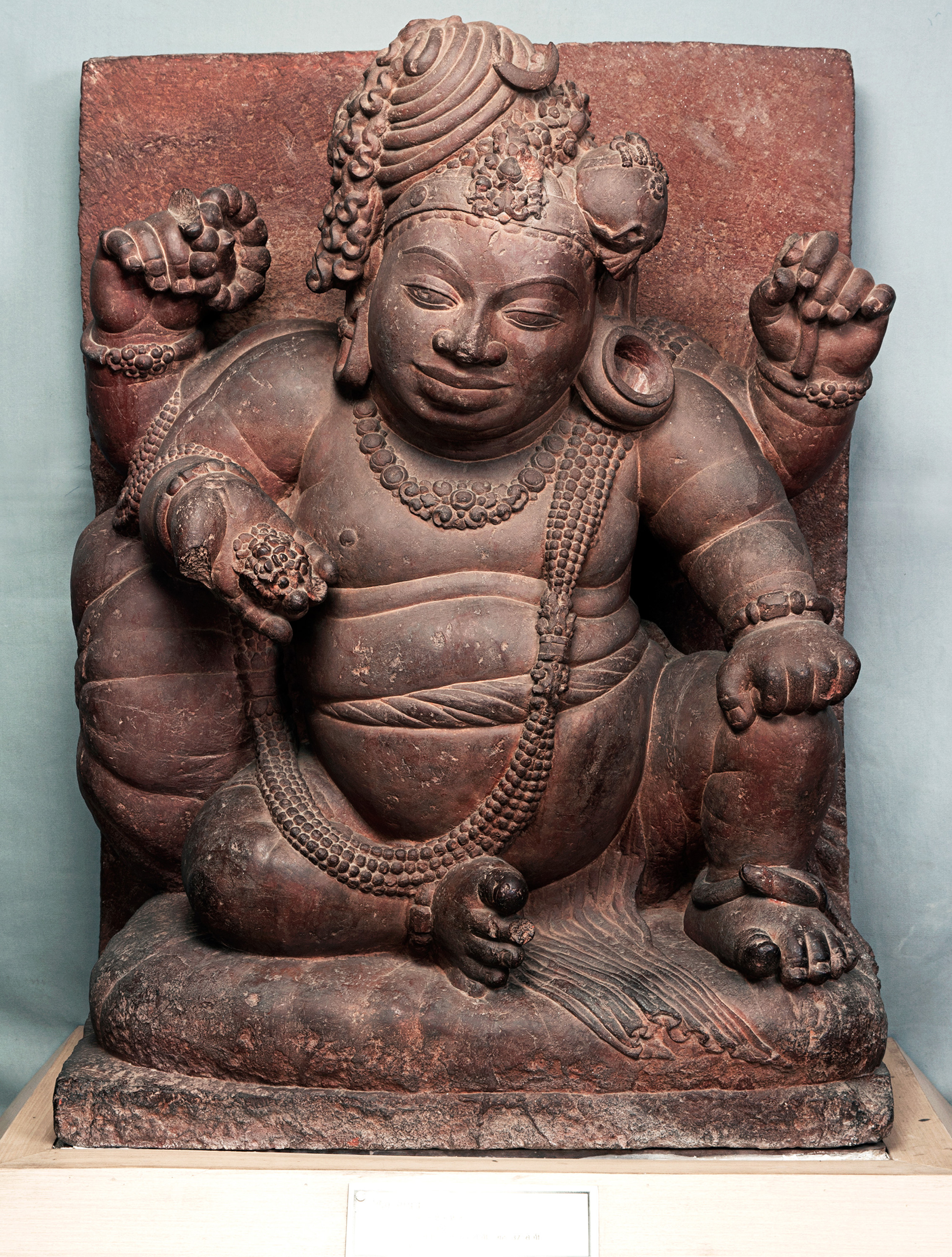Discover, Learn, immerse, Connect
Shiv Vamana
This rare sculpture of Shiva Vamana dates back to 5th CE. It belonged to the Vakataka period and originated in Mansar, Nagpur, Maharashtra. It is 85cm in height, 63 cm in width and 38 cm in depth. It is currently on display at the National Museum, New Delhi.
The Vakatakas were powerful rulers who had made alliances with the Bhairavas and the Guptas via bonds of matrimony. The Vakatakas were first mentioned in the inscriptions at Amravati from the 2nd century onwards. The Vakataka ruler Pravarasena is believed to have been a patron of art in all its forms along with being highly literate.
This atypical sculpture of Shiva (also called Siva) in the form of Vamana is made of red sandstone. Vamana means dwarf. This sculpture shows Shiva as a dwarf on a comfortable cushioned seat against a large accessorized pillow. He has four arms, a heavy face and a pot belly. He is also shown holding flowers in his lower right hand and a rosary in the upper right hand. He has the stalk of a lotus in the upper left hand (which now appears to be broken or lost) whereas his lower left-hand rests on his knee. His crown made of hair, called the Jatamukuta, is heavily adorned with flowers, jewels and a crescent-shaped moon. He is wearing an ornament in the right ear and a circular kundala in the left ear. With a jewelled necklace, there is a massive strand of twisted pearls across his body which here is a replacement for a sacred thread (which is called yajnopavita or a Janeyu). A bracelet and a snake-like anklet are seen on his left foot. He has a noticeably protruding belly, thick limbs, a very thick and wide nose and thick lips. He is seen draped in a dhoti. His facial expressions indicate his joyful mood.
 Government of India
Government of India



